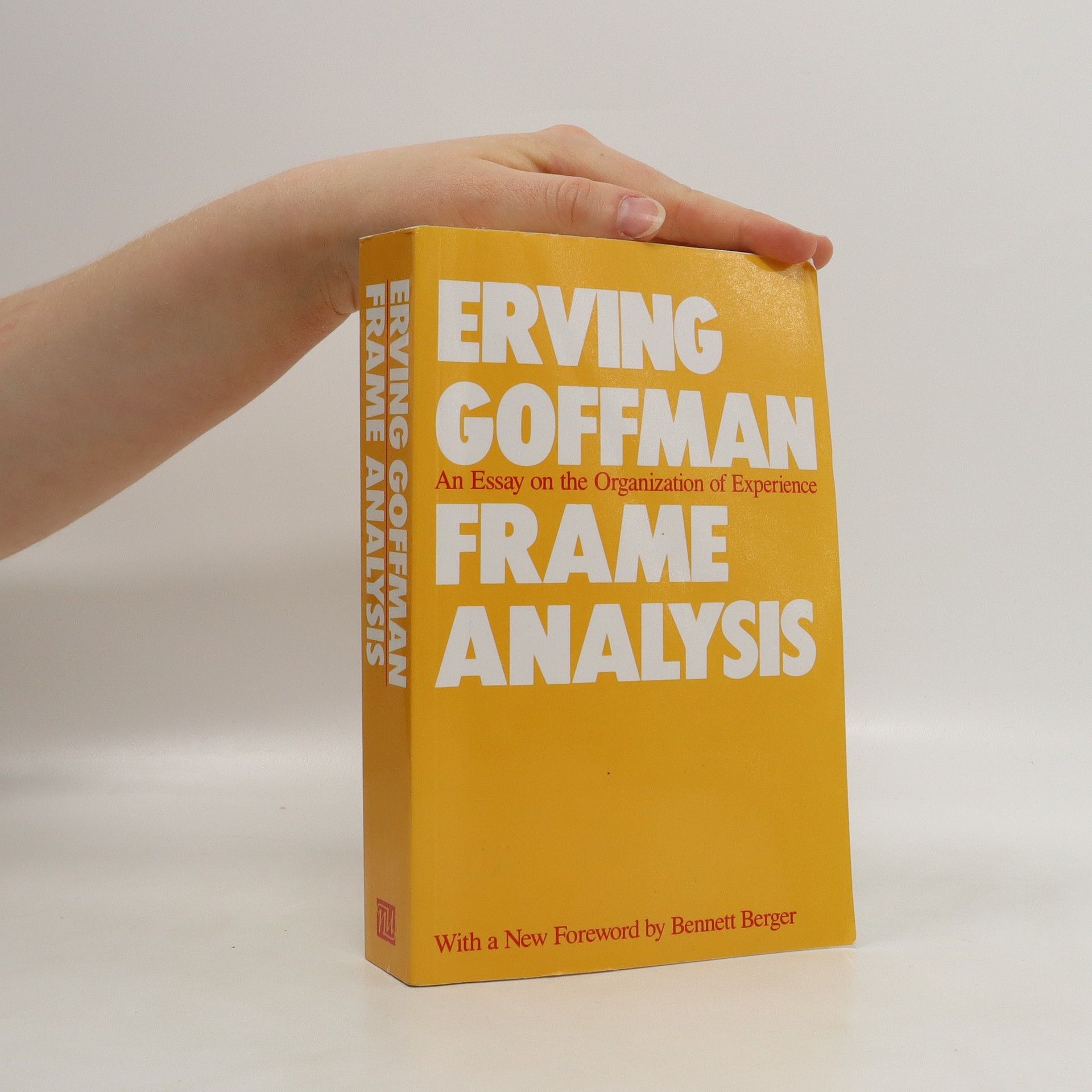Erving Goffman Libros
Erving Goffman fue un sociólogo y escritor canadiense, reconocido por su profunda análisis de la interacción social a través de una lente dramatúrgica. Su obra profundizó en la interacción simbólica, el orden social y la gestión de impresiones, inspirándose en pensadores como Durkheim, Freud y Mead. Las teorías de Goffman siguen siendo muy influyentes hoy en día, ofreciendo ideas críticas sobre la relación entre el comportamiento individual y la reproducción de los sistemas sociales, consolidando su estatus como un importante pensador sociológico del siglo XX.







Asylums: Essays on the social situation of mental patients and other inmates
- 386 páginas
- 14 horas de lectura
Asylums is an analysis of life in "total institutions" -- closed worlds such as prisons, army training camps, naval vessels, boarding schools, monastaries, nursing homes and mental hospitals -- where the inmates are regimented, surrounded by other inmates, and unable to leave the premises. It describes what these institutions make of the inmate, and what he or she can make of life inside them. Special attention is focused on mental hospitals, drawing on the author's year of field work at St. Elizabeth's in Washington, D.C., one of America's most well-known institutions. It is the thesis of this book that the most important factor in forming a mental-hospital patient is the institution, not the illness, and that the patient's reactions and adjustments are those of inmates in other types of institutions as well.The first essay is a general portrait of life in a total instituion. The other three consider special aspects of this the initial effects of institutionlization on the inmate's previous social relationships; the ways of adapting once in the institution; and the role of the staff in presenting to the inmate the facts of his or her situation.
Relations in Public
- 464 páginas
- 17 horas de lectura
The narrative explores the evolving perception of safety in public spaces, highlighting how recent events have transformed the sense of security that once defined these environments. It delves into the psychological impact of this shift, examining societal changes and the implications for individual behavior and community dynamics. Through personal stories and broader societal analysis, the book invites readers to reflect on the meaning of safety and the challenges of navigating public life in today's world.
"Not then, men and their moments. Rather, moments and their men," writes Erving Goffman in the introduction to his groundbreaking 1967 Interaction Ritual, a study of face-to-face interaction in natural settings, that class of events which occurs during co-presence and by virtue of co-presence. The ultimate behavioral materials are the glances, gestures, positionings, and verbal statements that people continuously feed into situations, whether intended or not. This is an interesting account of daily social interaction viewed with a new perspective for the logic of our behavior in ordinary circumstances.
Erving Goffman effectively extends his argument in favor of a diagnosis of deviant behavior which takes account of the whole social situation.
Stigma
- 176 páginas
- 7 horas de lectura
The dwarf, the disfigured, the blind man, the homosexual, the ex-mental patient and the member of a racial or religious minority all share one characteristic: they are all socially "abnormal", and therefore in danger of being considered less then human. Whether ordinary people react by rejection, by over-hearty acceptance or by plain embarressment, their main concern is with such an individual's deviance, not with the whole of his personality. "Stigma" is a study of situations where normal and abnormal meet, and of the ways in which a stigmatized person can develop a more positive social and personal identity.
Erving Goffman will influence the thinking and perceptions of generations to come. In Frame Analysis, the brilliant theorist writes about the ways in which people determine their answers to the questions “What is going on here?” and “Under what circumstances do we think things are real?”
This book brings together five of Goffman's seminal essays: Replies and Responses, Response Cries, Footing, The Lecture, and Radio Talk.
Asylums presents four interlinked essays that explore life in the 'total institutions': the closed systems of prisons, boarding schools, nursing homes and, most importantly, mental institutions. Focusing on the relationship between an inmate and the institution that contains them, Goffman unpicks how lives are managed 'on the inside', and how the setting more often than not works against the inmate's best interests. A radical exploration of the institutions that rule over the lives of men, women and children, Asylums is one of Erving Goffman's most insightful and long-lived works.
The Presentation of Self in Everyday Life
- 259 páginas
- 10 horas de lectura
A notable contribution to our understanding of ourselves. This book explores the realm of human behavior in social situations and the way that we appear to others. Dr. Goffman uses the metaphor of theatrical performance as a framework. Each person in everyday social intercourse presents himself and his activity to others, attempts to guide and control the impressions they form of him, and employs certain techniques in order to sustain his performance, just as an actor presents a character to an audience. The discussions of these social techniques offered here are based upon detailed research and observation of social customs in many regions.



